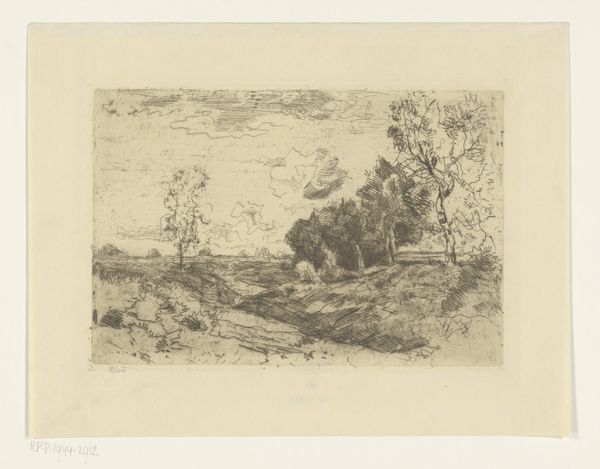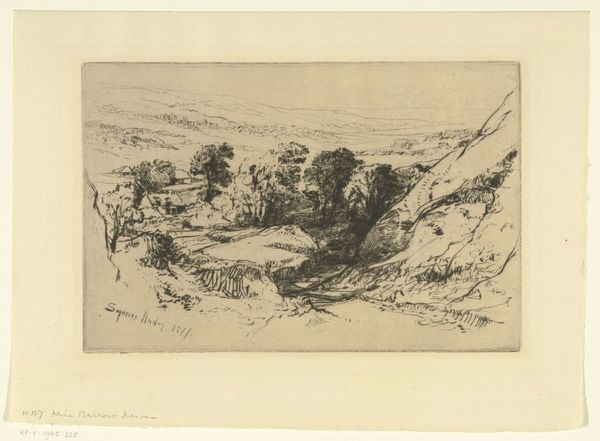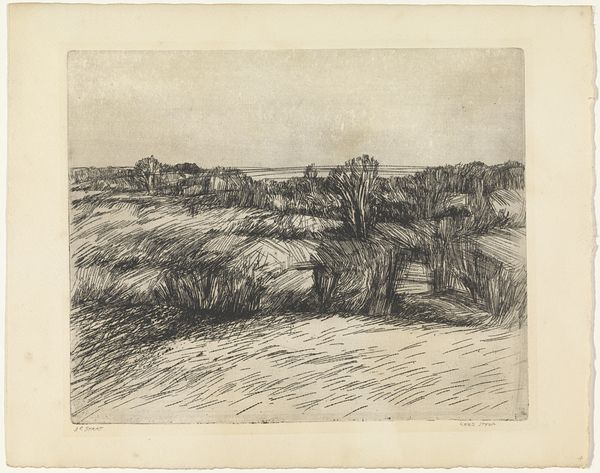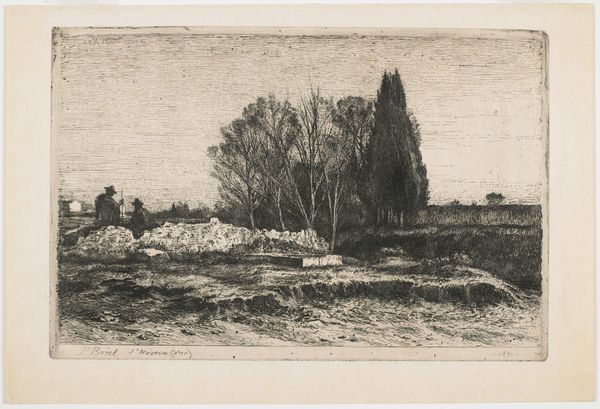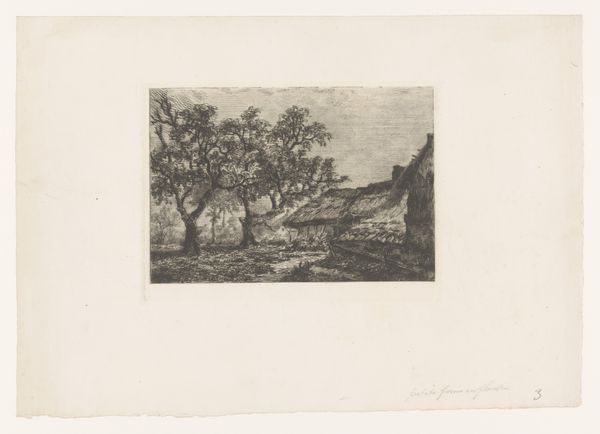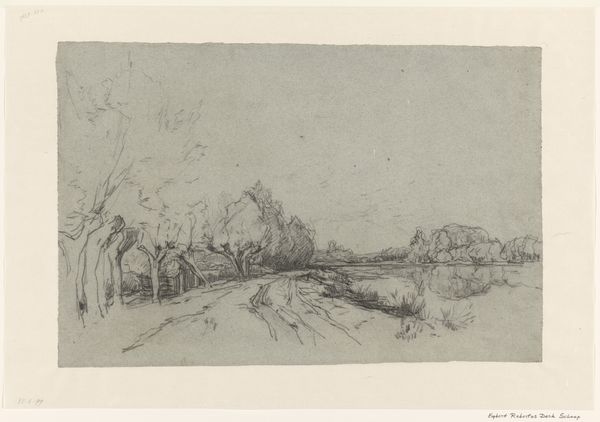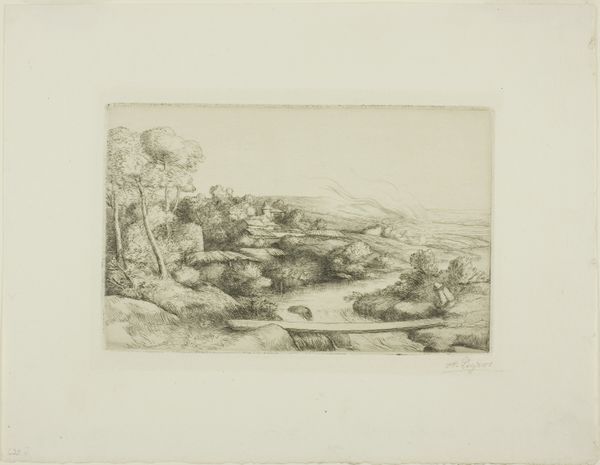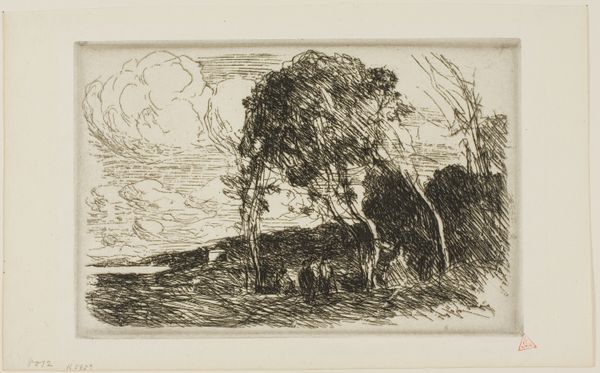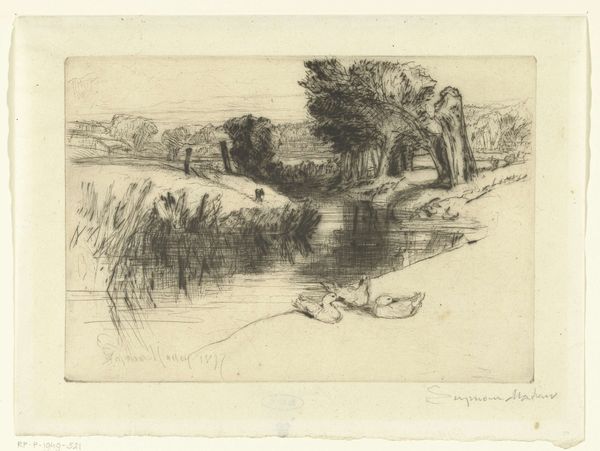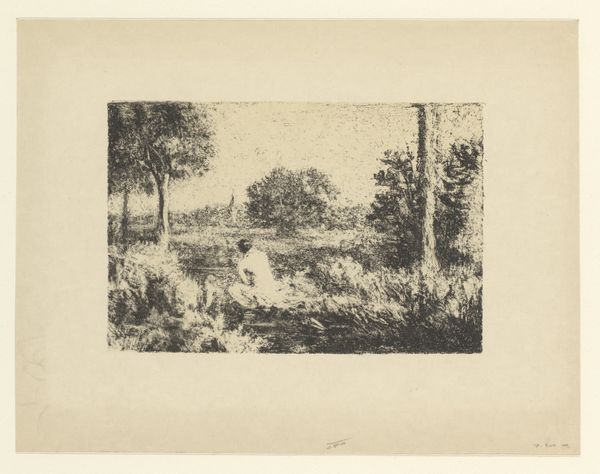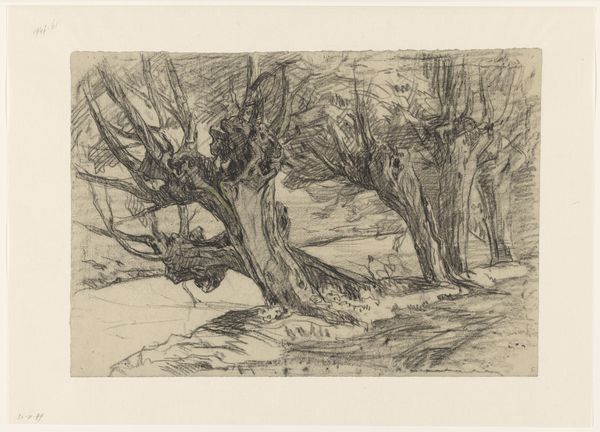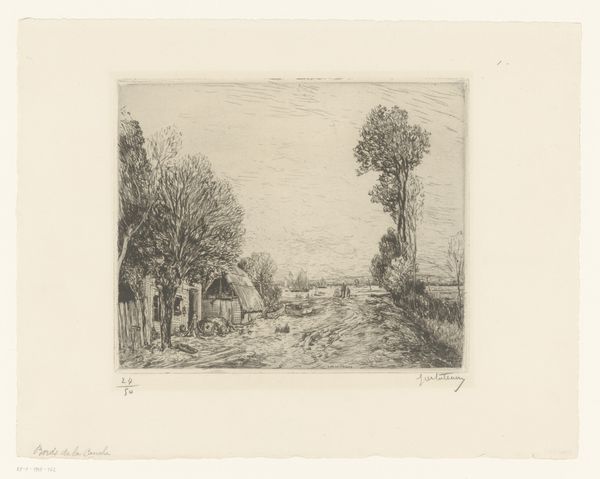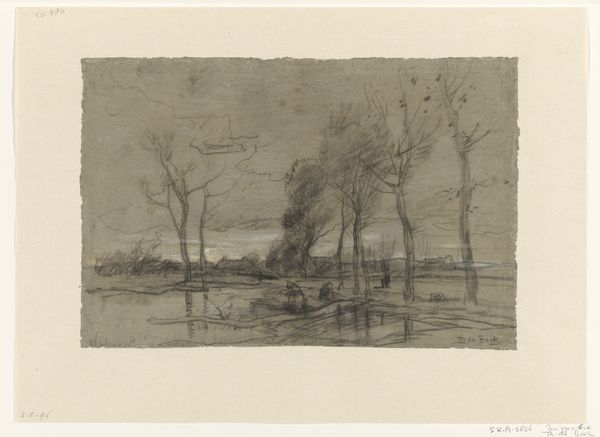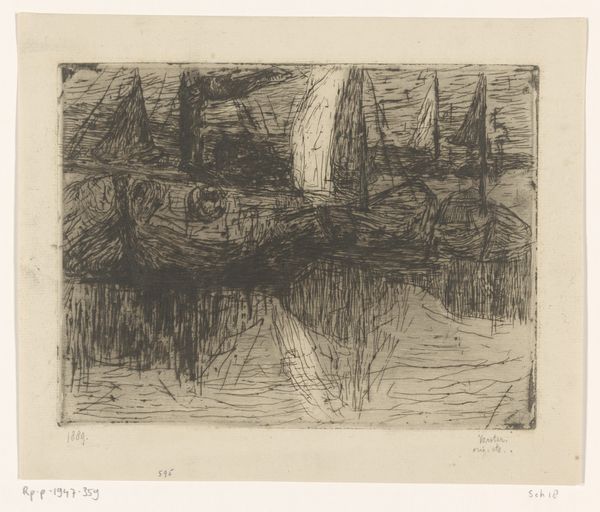
print, etching
#
aged paper
#
toned paper
# print
#
impressionism
#
etching
#
old engraving style
#
landscape
Dimensions: height 143 mm, width 183 mm
Copyright: Rijks Museum: Open Domain
Curator: Let's discuss this etching, "Willows by a Ditch," circa 1885, by Willem de Zwart. The overall tonal effect immediately evokes a sense of dampness and stillness. What strikes you first? Editor: The roughness! It has a compelling texture created by the hatching. It suggests a place defined by human interaction and a life dependent on those natural surroundings. Look how he depicts the material of that aging boat using cross hatching versus the straight, thin parallel strokes describing the stream. Curator: Precisely! Note how de Zwart utilizes the etched line to define form, and, most importantly, evoke atmospheric conditions. The values are subtle but critical, differentiating the sky from the land. The dark accents suggest the heaviness of the willows, bending slightly towards the water’s edge, heavy from precipitation and time. Editor: This print rewards careful observation, doesn't it? One wonders about the relationship to the land that defined much of agrarian society in the 1880s. How much did it govern the everyday actions of the community to whom it belonged? Curator: An insightful connection, yes. De Zwart doesn’t romanticize it. The realism, rendered with such nuanced tonal gradations, transforms the mundane into the poetic. Editor: I'd say his focus on the materials elevates it from the mundane, right? You’re also getting an insight into the artist’s own material exploration too – experimenting with what can be expressed through etching. Curator: It's about the experience, isn't it? This work beautifully captures the feeling of a specific place and moment in time. We perceive a truth and depth here that transcends merely its topographical accuracy. Editor: Well said! It's like we’re contemplating how material reality shapes individual experience—both De Zwart's and our own! Curator: Exactly! An invitation for deeper engagement with the world around us through careful visual observation, and an understanding of the structures embedded in seemingly simple imagery. Editor: Yes, reminding us that there is profound meaning to be found in the simplest materials and scenes.
Comments
No comments
Be the first to comment and join the conversation on the ultimate creative platform.
